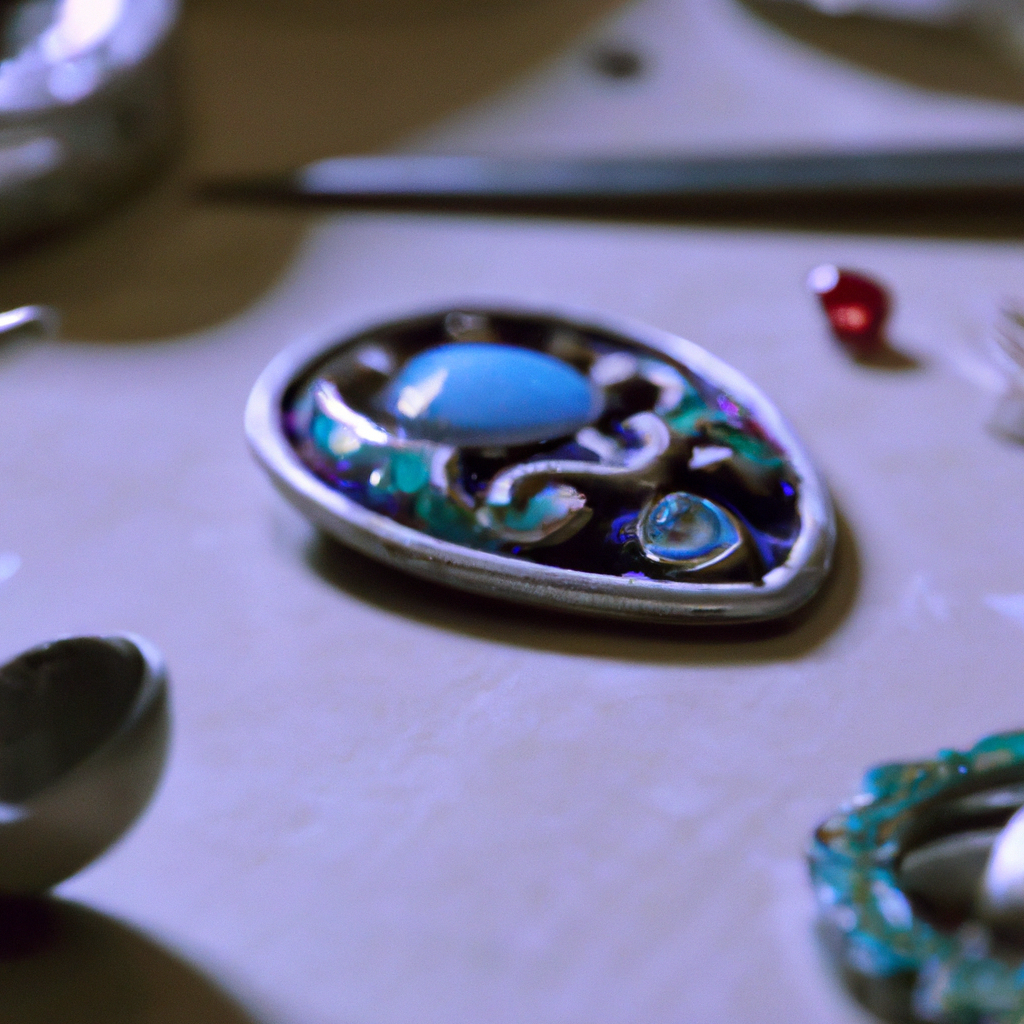Cloisonné jewelry is a type of enameling that has been used for centuries to create beautiful and intricate designs on metalwork. This decorative arts technique involves creating small compartments or cells, called cloisons, on the surface of a metal object, and filling these compartments with colored enamel. The result is a stunning piece of jewelry that is both colorful and durable. In this article, we will explore the techniques involved in creating cloisonné jewelry.
The Cloisonné Technique
The cloisonné technique involves creating small cells or compartments on a metal surface, usually using thin strips of metal called cloisons. These strips are bent and shaped to create the desired design, and then glued or soldered onto the metal surface. The resulting design is then filled with colored enamel, which is a type of glass powder mixed with a liquid medium.
The enamel is applied to the cloisons using a brush or pipette, and then fired in a kiln at a high temperature to melt and fuse the glass to the metal. This process is repeated several times, with each layer of enamel being fired separately to create a smooth and even surface.
Once the enamel has been fired and cooled, the surface is polished to remove any imperfections and to bring out the vibrant colors of the enamel. The finished piece is then ready to be mounted onto a piece of jewelry, such as a pendant or a brooch.
Enameling Techniques
There are several different types of enameling techniques that can be used to create cloisonné jewelry. One of the most common is the champlevé technique, which involves carving or etching a design into a metal surface, and then filling the resulting recesses with enamel.
Another technique is the plique-à-jour technique, which involves creating a design using thin strips of metal that are suspended in a frame, and then filling the resulting compartments with enamel. This technique is similar to cloisonné, but the cells are not enclosed by metal strips, and the enamel is often transparent, allowing light to pass through the piece.
Metalwork Techniques
Creating cloisonné jewelry requires a high level of skill in metalwork, as the metal strips used to create the cloisons must be precisely shaped and soldered onto the metal surface. This requires a steady hand, an eye for detail, and a great deal of patience.
In addition to shaping the cloisons, the metalwork involved in creating cloisonné jewelry also includes creating the mounting for the finished piece. This may involve soldering a loop onto the back of a pendant, or attaching a pin to the back of a brooch.
Decorative Arts Techniques
Cloisonné jewelry is a form of decorative arts, and as such, it often incorporates other techniques and materials to create a truly unique piece. For example, many cloisonné pieces are embellished with precious stones, such as diamonds or rubies, to add extra sparkle and shine.
Other decorative arts techniques that may be used in conjunction with cloisonné include repoussé, which involves hammering metal from the back to create a raised design, and chasing, which involves using a tool to create a design on the surface of the metal.
Conclusion
Creating cloisonné jewelry is a complex and time-consuming process that requires a high level of skill in metalwork and enameling. However, the end result is a stunning piece of jewelry that is both colorful and durable, and that can be treasured for generations. Whether you are a collector of decorative arts, or simply appreciate the beauty of finely crafted jewelry, cloisonné is a technique that is sure to impress.







